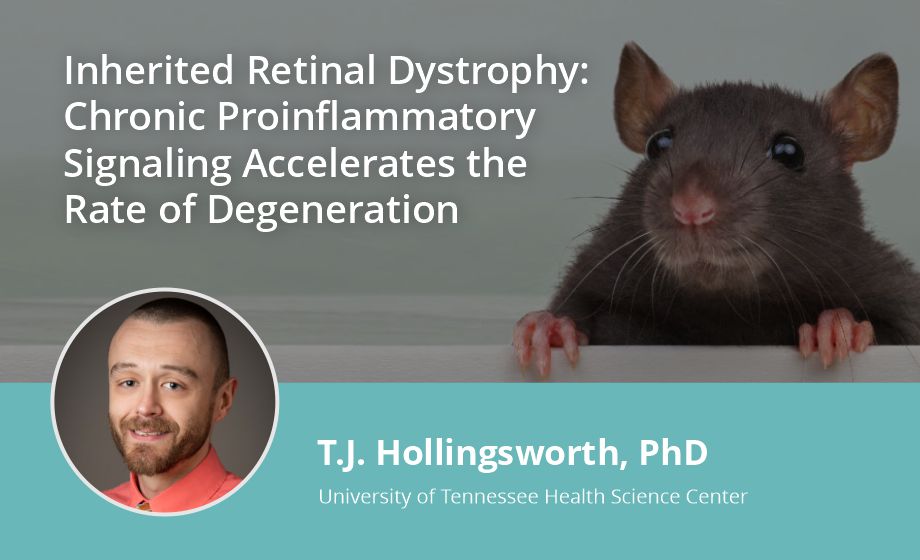Q&A Report: Inherited Retinal Dystrophy: Chronic Proinflammatory Signaling Accelerates the Rate of Degeneration

The answers to these questions have been provided by:
T.J. Hollingsworth, PhD
Assistant Professor
University of Tennessee Health Science Center
You may also read this Q&A here: https://stria.tech/journal-club-inherited-retinal-dystrophy-ird/#QandA
Are these the only genes associated with retinal disease that have SNPs in the BXD32 mouse or are other genes also altered?
There are other genes bearing SNPs. This study is focused on genes with SIFT scores predicting the SNPs to be deleterious.
What flash intensity was used for the ERGs?
~ 10cd*s/m2
Is the polygenic gene list exhaustive or where there possibly others - I am interested in SNPs in genes required for peroxisome assembly that might contribute to IRD?
Over 175 genes were analyzed including peroxisome genes identified in the literature previously. No peroxisome genes were found to have predicted deleterious SNPs.
Are the macrophages labeled in these retinas purely microglia or is there infiltration of blood-borne macrophages?
Currently we do not know as identifying these different subpopulations of macrophages is not possible using the current labeling, however, we are in collaboration with another group working on this topic.
With so much degeneration going on in the outer retina, would you not have expected more changes in the inner retina?
Not typically, no. Most changes in the inner retina occur with remodeling to accommodate the loss of the rods and cones. This does change some of the circuitry, but this is more on a cell to cell level and not grossly observable.
It appears the INL of the BXD32 with progressive degeneration the somas appear larger in size in comparison to WTs. Is it because the cells are dying, and the remaining cells are accommodating by increasing their cell surface area?
That is a good question. It is hard to say but it is known that Müller cells experience hypertrophy and gliosis in retinal degenerations, so this is likely the source of the larger somas.
Technical question: In your immunos, how do you control for "exposure", so that you can properly draw conclusions about expression increases?
We typically use the same settings for laser power and gain and use a no primary, secondary only control to remove background and autofluorescence.
Have you considered giving antiflammatory at the late stage and at around P21 in order to prevent the inflammation to increase? For example, like giving the mice prednisione?
We have considered this and it is part of a study for which I was recently funded by the Knights Templar Eye Foundation. It is involving the delivery of anti-inflammatory molecules affecting cytokines.
Why is the degeneration superior to inferior?
That is not a question that is necessarily easy to answer. Most retinal degenerations are highly heterogenous and can even vary from person-to-person within the same family with the same mutation. It is possible that the combination of genes with SNPs preferentially affect photoreceptors in the superior central retina than other regions.
Why not to RT-PCR on the retinas to quantify for the expression level rather than the IHC?
We actually use western blots to do most of our quantification when possible. Protein level is far more informative, especially in photoreceptors as they produce some proteins in amounts that exceed the amount of mRNA present for the gene.